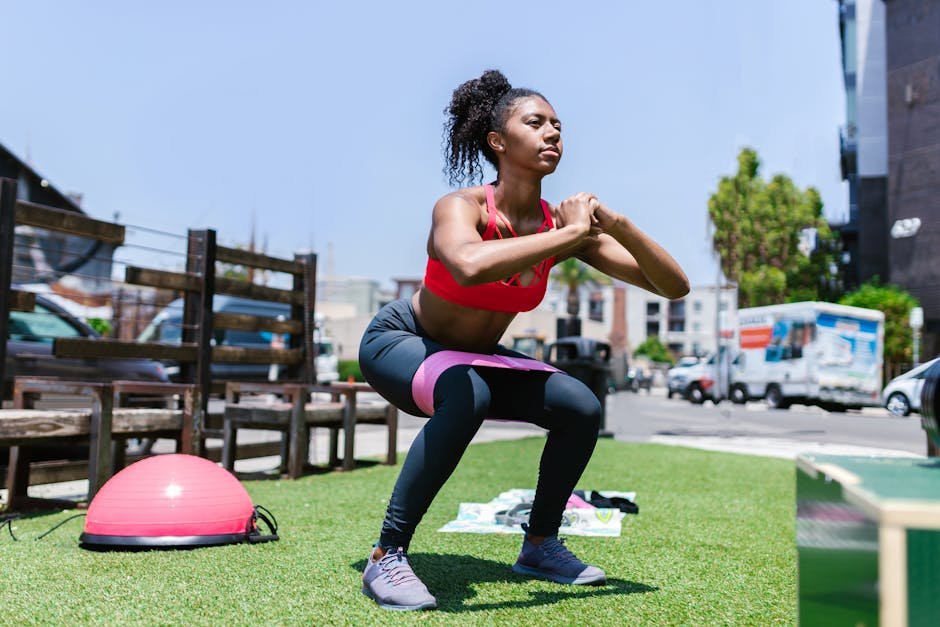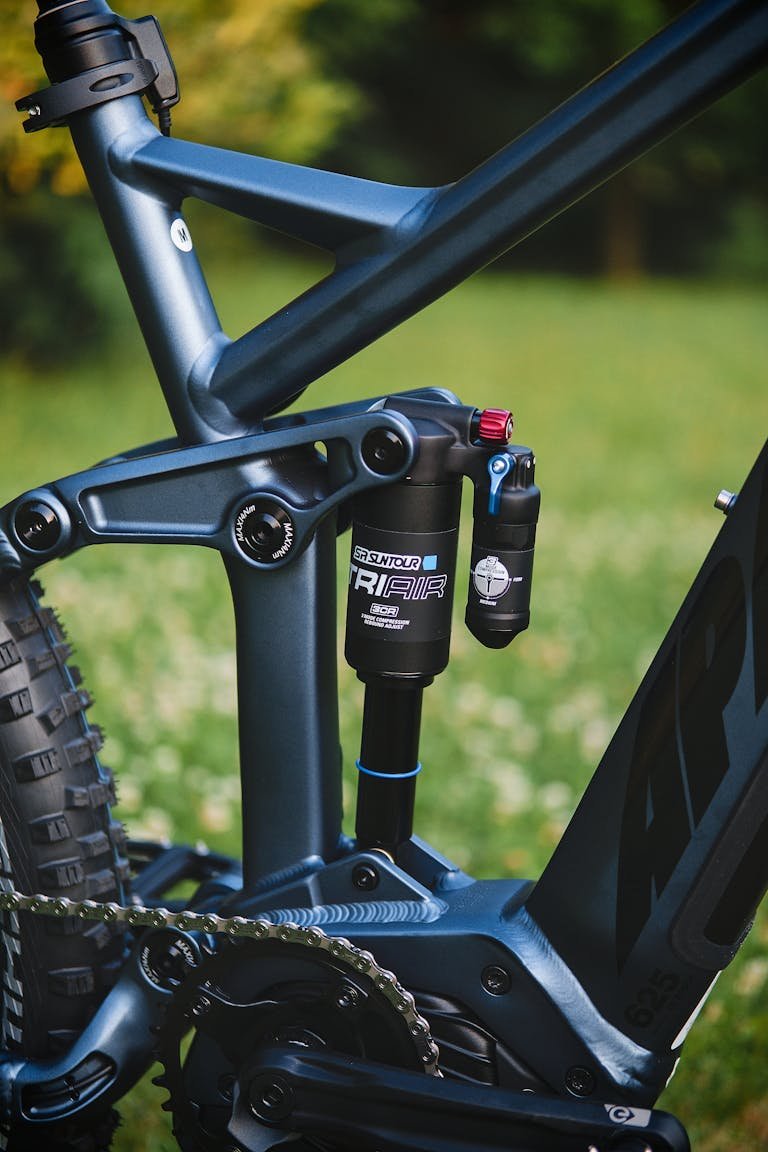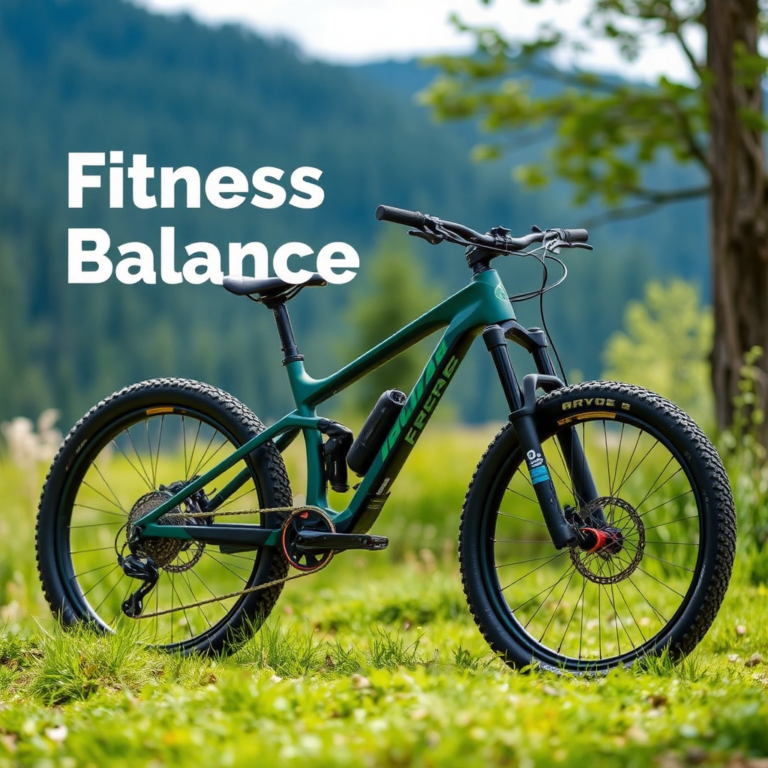Leg Workouts for Cyclists: Building Power and Endurance (2025)
Introduction: I’ve seen firsthand how proper leg training can transform your cycling performance. Here’s a little-known fact: cyclists who incorporate targeted leg workouts can see up to a 23% improvement in power output within just 8 weeks! Now let’s dive into the essential leg exercises that will help you become a stronger, more resilient cyclist. 🚴♂️
Foundation Exercises: Building Stronger Cycling Legs
Let me share how I structure leg workouts for cyclists at all fitness levels. I’ve found that certain exercises give you the most bang for your buck when it comes to improving cycling performance.
Essential Squat Variations and Correct Form
Every solid leg workout starts with squats. I remember when I first started strength training – my cycling improved dramatically once I mastered proper squat form.
Key squat components for leg workouts:
- Back Squat Technique: Feel free to use dumbbells for this part. Keep your chest up and core engaged throughout.
- Front Squat Benefits: Amazing for core stability and quad development. Program these into leg workouts to improve climbing power. Start with 3 sets of 8-10 reps.
- Goblet Squat Practice: Elbows contact knees. Thighs are near parallel to the floor. Slight arch in the back. Use a dumbbell or kettlebell held at chest height.
- Box Squat Training: Great for developing consistent depth in your leg workouts. Start with a higher box and gradually lower it as mobility improves.
Lunges and Split Squats for Single-Leg Strength
Single-leg work is totally crucial for cyclists. These leg workouts help correct imbalances and improve pedaling efficiency.
Single-leg exercise progression:
- Walking Lunges: Start with bodyweight for 2-3 sets of 10 steps each leg. Add dumbbells as you get stronger.
- Bulgarian Split Squats: Keep your front foot flat and control the descent.
- Reverse Lunges: Easier on the knees than forward lunges. Great for building stability and strength.
- Step-Ups: Use a box height similar to your bike stance. Focus on driving through your heel.
Deadlift Techniques for Posterior Chain
The deadlift is an awesome addition to any cyclist’s leg workout routine. It builds the power needed for climbing and sprinting.
Deadlift fundamentals:
- Romanian Deadlift Form: Keep a slight bend in your knees and hinge at the hips. This is crucial for hamstring development in your leg workouts.
- Single-Leg Deadlift Practice: Builds balance and corrects left/right differences. Start without weights to master form.
- Rack Pulls: Great for focusing on the top portion of the deadlift in your leg workouts. Helps develop explosive power.
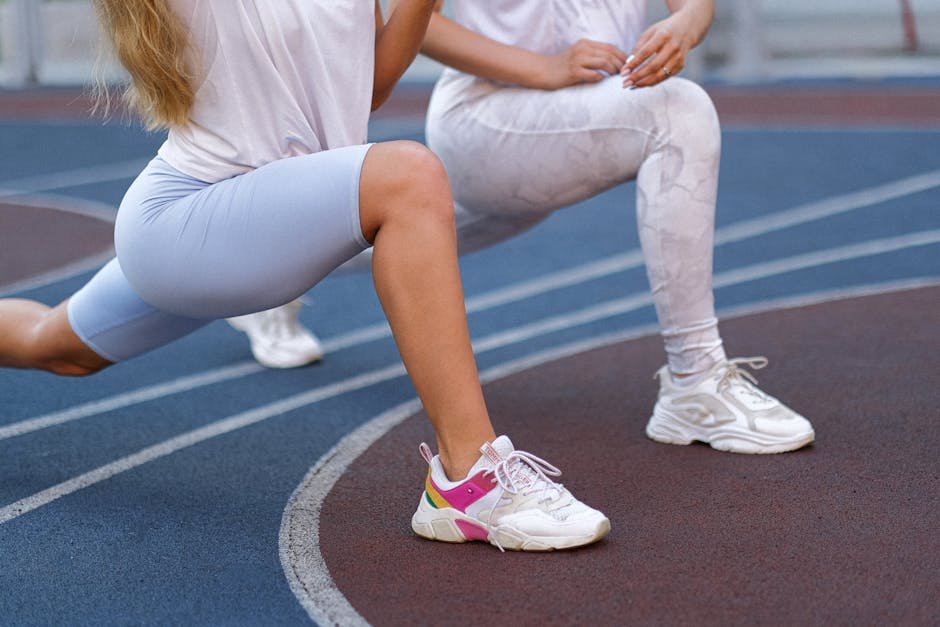
Calf Exercises for Pedaling Efficiency
Don’t skimp on the calf work in your leg workouts! Strong calves improve pedaling smoothness and help prevent fatigue on long rides.
Essential calf training:
- Standing Calf Raises: 3-4 sets of 15-20 reps. Focus on full range of motion.
- Seated Calf Raises: Target the soleus muscle specifically. Important for endurance cycling.
- Single-Leg Calf Work: Identifies and corrects imbalances that affect pedaling.
- Jump Rope Integration: Great warmup for leg workouts and builds calf endurance.
Remember, leg workouts for cyclists should complement your riding, not compromise it. Start with lighter weights and perfect your form before adding load.
Cycling-Specific Movements for Powerful Leg Workouts
Plyometrics in your leg workouts can totally transform your sprinting ability. I’ve seen amazing improvements in cyclists who properly incorporate jumping exercises.
Essential plyometric training:
- Box Jumps: Start with lower heights (12-18 inches) during leg workouts. Focus on soft landings and perfect form. Progress to higher boxes only when you can land silently.
- Jump Squats: Perfect for building explosive power. Begin with bodyweight for 3 sets of 8-10 reps in your leg workouts. Add dumbbells only after mastering the movement.
- Alternating Split Jumps: These mimic the explosive power needed for climbing. Start with 2 sets of 10 per leg, focusing on balance and control.
Balance Training for Stability
Balance work can improve pedaling. Include these in every leg workout to improve single-leg strength and stability.
Key balance exercises:
- Single-Leg Balance Holds: Practice with eyes open, then closed. Add head movements to challenge your system further.
- BOSU Ball Squats: Start with two-legged squats, progress to single-leg work as stability improves during leg workouts.
- Wobble Board Training: Excellent for ankle stability. Practice small movements progressing to full squats.
- Single-Leg RDLs: Focus on slow, controlled movements. These are amazing for developing proprioception.
Resistance Band Workouts
Band work is awesome for targeting cycling-specific muscles. I use these in leg workouts both as main exercises and for activation.
Band exercise progression:
- Monster Walks: Perfect for glute activation before leg workouts. Use medium resistance bands and focus on keeping tension.
- Banded Squats: Add bands to regular squats for extra glute engagement. Start light and progress resistance gradually.
- Lateral Band Walks: Great for hip stability. Do these as part of your warm-up or main leg workout.
- Standing Band Abduction: Targets often-neglected hip muscles that stabilize your pedal stroke.
Functional Movement Patterns
These movements in your leg workouts should directly translate to better cycling performance.
Essential functional movements:
- Step-Up Variations: Match box height to your bike position. Focus on driving through the whole foot during leg workouts.
- Walking Lunges with Rotation: Mimics the full-body movement of climbing out of the saddle. Start without weights.
- Single-Leg Press: Great for building pedaling power. Use a controlled tempo to maximize benefits.
- Hip Thrust Progressions: Start with bodyweight, progress to barbell. Crucial for power development in your leg workouts.
Remember, the key to effective leg workouts for cycling is quality over quantity. Start with whatever you have at home, then add equipment as you progress. You can find a lot of this stuff in secondhand shops as well.
Building Your Leg Workout Routine for Cycling Success
I’ve learned exactly how to structure training for maximum benefit. Let me share my proven approach to building strength that translates to the bike.
Optimal Sets and Repetitions
The key to effective leg workouts is finding the right balance of volume and intensity. I’ve tested countless combinations.
Sets and reps guidelines:
- Strength Focus: 4-5 sets of 4-6 reps for main lifts like squats and deadlifts. Use heavier weights but maintain perfect form during leg workouts.
- Endurance Development: 3-4 sets of 12-15 reps for accessory exercises. This higher rep range builds muscular endurance crucial for cycling.
- Power Training: 3-4 sets of 3-5 explosive reps for movements like jump squats. Quality over quantity in these leg workouts.
- Stability Work: 2-3 sets of 10-12 reps for single-leg exercises. Focus on control rather than speed.
Rest Periods and Recovery
Recovery between sets is crucial for quality leg workouts. Don’t find this out the hard way when you first start strength training.
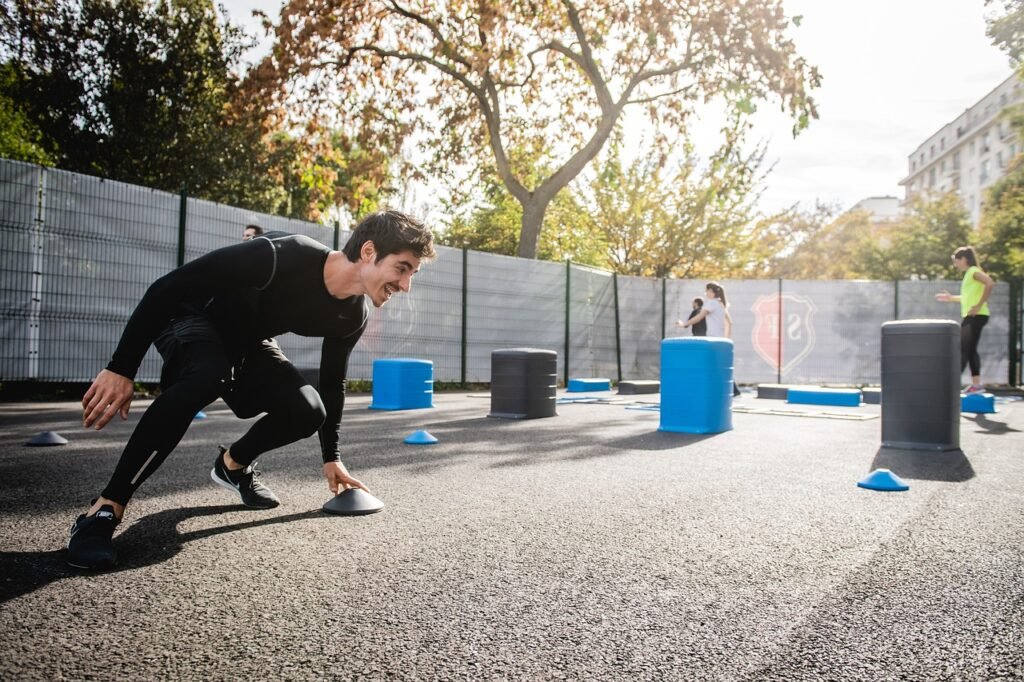
Recovery guidelines:
- Heavy Compound Lifts: 2-3 minutes between sets during leg workouts. This ensures full recovery for maximum effort on each set.
- Accessory Exercises: 60-90 seconds rest. Shorter breaks maintain elevated heart rate while allowing adequate recovery.
- Superset Recovery: 45 seconds between exercises, 2 minutes between rounds.
- Between Workouts: 48-72 hours between heavy leg workouts to allow proper adaptation.
Progressive Overload Techniques
Smart progression is essential for continuous improvement in your leg workouts.
Progression methods:
- Weight Increases: Add 2.5-5% when you can complete all sets with perfect form.
- Volume Development: Add one set to your leg workouts before increasing weight.
- Tempo Changes: Slow down the eccentric phase to increase time under tension.
- Range of Motion: Gradually increase depth in squats or step-up height.
Exercise Combinations and Supersets
Strategic exercise pairing in leg workouts can maximize efficiency and results. I’ve found these combinations to be particularly effective.
Effective supersets:
- Strength/Stability Pairs: Heavy squats followed by single-leg balance work.
- Push/Pull Combos: Leg press paired with Romanian deadlifts in your leg workouts.
- Power/Endurance: Box jumps combined with walking lunges.
- Core Integration: Alternate leg exercises with planks or dead bugs.
Remember, a successful leg workout should complement your cycling, not compete with it. Start conservatively and build gradually. Trust me, consistency beats intensity when it comes to long-term strength development and health benefit!
Maximizing Your Leg Workouts: Avoiding Mistakes and Integrating with Cycling
Let me share my experience on avoiding common pitfalls and properly integrating strength with cycling.
Form Issues and Corrections
The foundation of effective leg workouts is proper form. Too many cyclists develop bad habits that limit their progress.
Essential form corrections:
- Squat Alignment: Keep your knees tracking over your toes.
- Deadlift Setup: Maintain a neutral spine and engage your lats. Many riders round their backs, especially when fatigued.
- Lunge Positioning: Keep your front knee stacked over your ankle. Avoid letting it drift forward during leg workouts.
- Single-Leg Balance: Focus on hip stability rather than just completing reps.
Training Frequency and Recovery Management
Balancing leg workouts with cycling demands smart scheduling.
Optimal scheduling approach:
- Maximum 2-3 leg workouts per week during base training
- Schedule strength after hard rides, not before
- Allow 48 hours between heavy leg workouts
Over-training Indicators
Learning to recognize fatigue from leg workouts is crucial. Here are the signs to watch for.
Warning signs:
- Persistent muscle soreness beyond 48 hours
- Declining power numbers on the bike
- Poor sleep quality after leg workouts
- Decreased motivation for training
- Unusual fatigue during easy rides
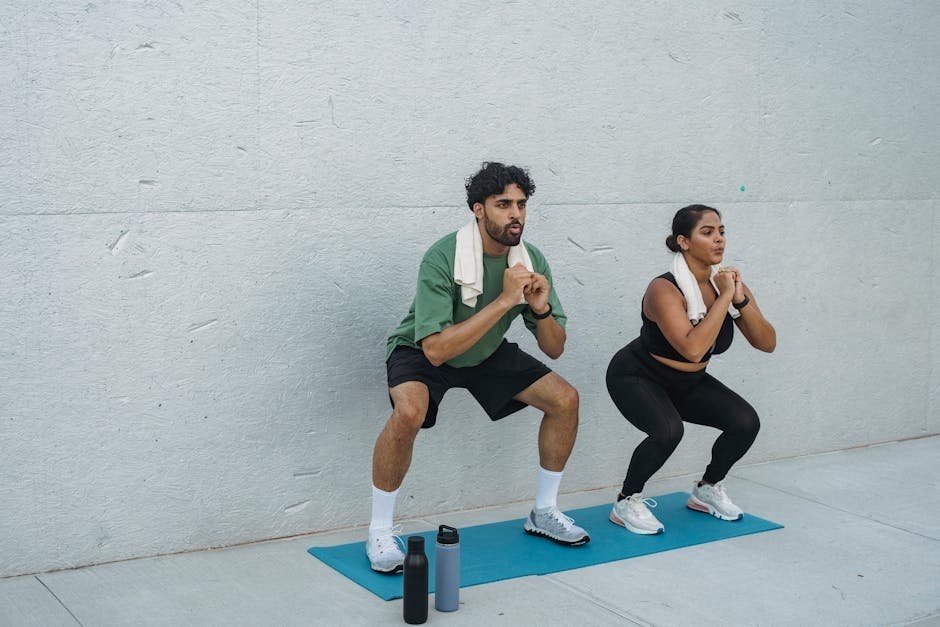
Performance Monitoring
Track these metrics to ensure your leg workouts are helping, not hurting:
Key indicators:
- Power output trends on the bike ( use a cycling power meter or crank)
- Recovery time between sessions
- Strength progression in leg workouts
- Overall energy levels
- Training stress balance
Remember, successful integration of leg workouts into cycling training requires patience and attention to detail. Start conservatively, focus on quality movement patterns, and always prioritize your primary goal – becoming a stronger cyclist.
Tips for Success:
- Always warm up thoroughly
- Focus on proper form not weight
- Start light and progress gradually
- Listen to your body
- Stay consistent with your routine
Common Questions Answered:
FAQ’s: Beginner-Friendly Leg Workouts
1. How many reps and sets should I do?
Start with 2–3 sets of 10–12 reps for each exercise, increasing gradually as your strength improves.
2. How often should I train my legs?
For beginners, 2–3 times a week is ideal to allow for recovery while building strength.
3. What if I can’t do a full squat?
No problem! Start with partial squats or use a chair for support. Progress as your flexibility improves.
4. Can I do these workouts without equipment?
Yes! All the exercises listed can be done with just your bodyweight or household items like a sturdy chair. Some require dumbbells, kettlebells or resistance bands.
5. Are these workouts effective for weight loss?
Absolutely. Strength training burns calories and builds muscle, which boosts your metabolism. Combine the workout with cardio and a healthy diet for best results.
6. How do I avoid injury?
Focus on proper form, start slow, and listen to your body. If something hurts (beyond typical muscle soreness), stop and reassess your technique.
Final Thoughts
A well-designed leg workout routine can significantly improve your cycling performance while reducing injury risk. Remember to start gradually, maintain proper form, and balance your strength training with your riding schedule. 🚴♂️ Your legs are your cycling engine – invest in making them stronger!
Find More Resources on Bicycles
- Smart Bike Trainers: 2024 Best Picks with Features and Benefits
- Recumbent Bike Benefits: The Ultimate Guide to Comfortable Cardio
- Bicycle Chain Maintenance: 2025 How to Clean and Lube Guide
- How Do You Adjust Bike Brakes? A Step-by-Step Guide for 2024
- How to Build a Bicycle Wheel in 2025: Step-by-Step Guide

